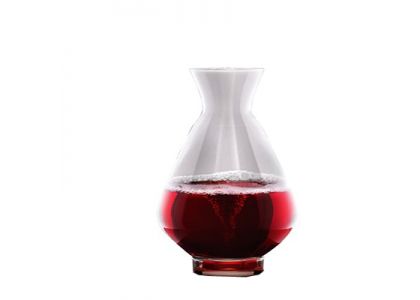
Ultrasonic aging device, ultrasonic wine aging equipment
Liquor requires a long storage period in the production process. This is because the newly produced wine contains nasal ingredients with drunkenness, and has unpleasant odors such as irritation and pungency. After a period of storage (ageing), the aroma is coordinated, the irritating and spicy taste is obviously reduced, and the wine taste is soft. Traditionally, the aging time of wine is generally as long as several years or even more than ten years. Ultrasonic treatment can greatly shorten the aging time.
The method of ultrasonic aging for alcohol is the effect of applying sound field strength to various substance molecules in alcohol from the outside.
The role is specifically manifested in three aspects:
1. Promote cooperation
Enhance the affinity between polar molecules, not only enhance the degree of association between alcohol molecules and water molecules, but also may form a larger and firmer association group between polar molecules. In order to promote the lipidation reaction and produce lipid molecules in the system, certain lipids and acids may also participate in this association group.
2. Enhance molecular activation energy
Improve the effective collision rate between molecules, accelerate the reaction of fatification, condensation, redox, etc., which is beneficial to form the alcohol-fat brewing flavor of the wine.
3. Accelerate the volatilization of low boiling point components
Due to the increase of molecular kinetic energy, the possible presence of hydrogen sulfide, ethanone and other components accelerates the escape from the liquor, and quickly eliminates pungent and other peculiar smells.
The use of ultrasound in the brewing industry in foreign countries has not happened in recent years, especially Japan has done a lot of work in this area.
Ultrasonic irradiation can promote the reproduction of yeast, shorten the fermentation time and increase the aroma of wine. But too strong ultrasound will damage the yeast cells, so different fermentation broths should have their own suitable ultrasound intensity. Ultrasonic radiation from the outside of the tank will reduce the intensity of the ultrasound to a greater extent; during direct irradiation, if the intensity of the ultrasound is too high, it will damage the yeast. Therefore, the weaker ultrasonic waves can be input from multiple different positions and different directions, and the effect is best.
Ultrasound is also used to accelerate the aging of wine. After the body of the wine undergoes ultrasonic vibration, the lipids are accelerated to combine with ethanol and water. After a short period of storage, the wine is full-bodied, sweet and soft.
1. Rice wine aging effect
Ultrasonic aging of rice wine has obvious effects. The content of acid, alcohol, aldehyde, vinegar, and fat in the wine has a similar change trend with traditional aging wine.
2. White sprinkle aging effect
After ultrasonic treatment, the aroma and taste of the liquor will change. Ultrasonic treatment can promote the aging of the liquor and have certain effects on the liquor degree, total acid, total fat, methanol content, etc.
3. Beer aging effect
The unique bitterness of hops will appear when the beer is ultrasonically processed for 5 minutes, and the use of ultrasonic waves in beer production can save raw materials.
4. Wine aging effect
Ultrasonic treatment of wine can not only age the wine, but also settle down the suspended solids and other fine particles, which can be stabilized within two years.